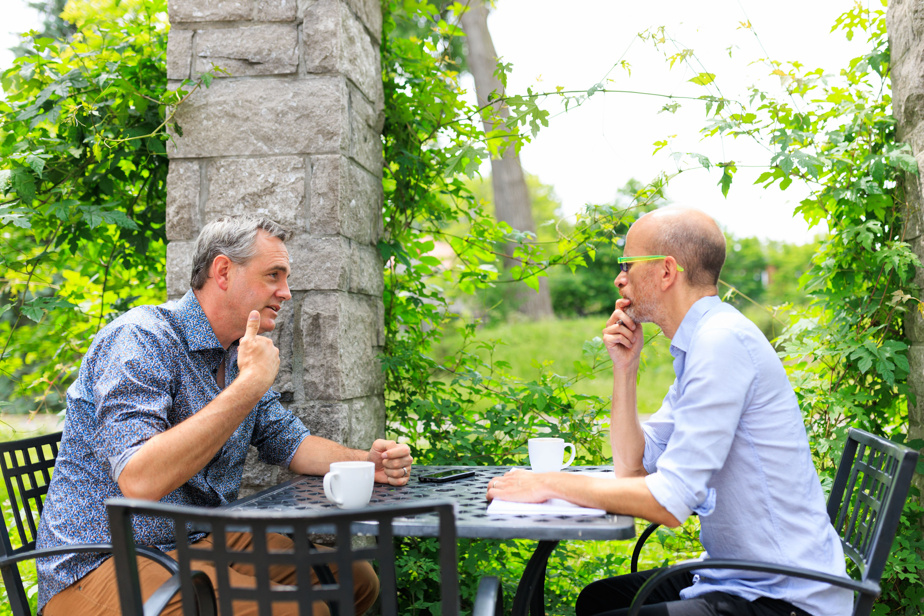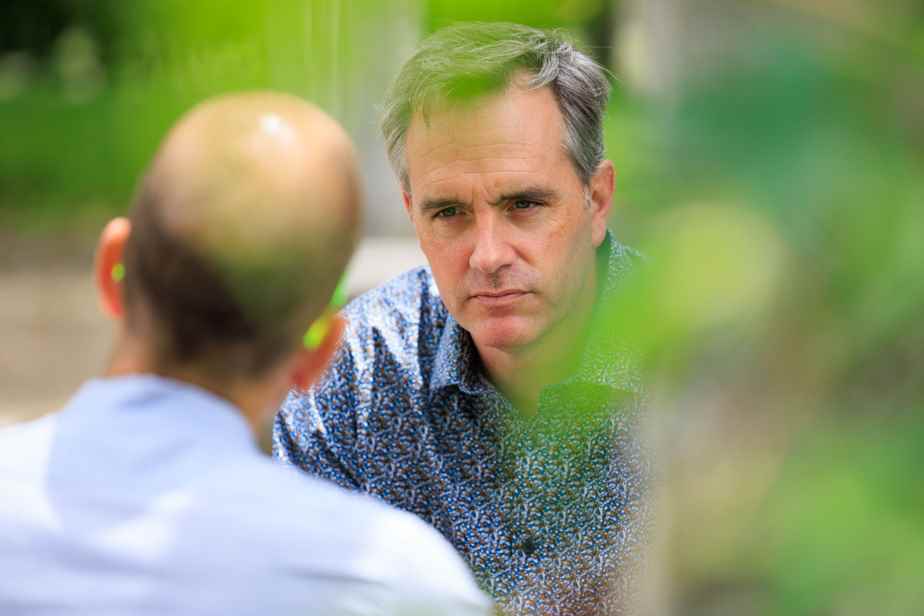If some claim to see our future in tea leaves, Maxim Larrivee is indeed able to see that of the planet by studying insects.
Posted on July 3
And the news is not very good, you can imagine. Insects are disappearing at a worrying rate. Simple test to see: this summer, see how clean your vehicle’s windshield is, even if you’ve been driving for a few hours. 30 years ago it would have been covered in insects.
“The windshield test is as innocuous and simplistic as it is true,” says Maxim Larrivee when asked for his opinion on this phenomenon.
But we will come back to this later. Everything in its time. Allow us first to make the introductions, because you may have never heard of this charismatic 40-year-old with an athletic physique. And that’s a shame, because this seasoned researcher and science popularizer with contagious enthusiasm deserves to be known.
He invites us to meet on the terrace of the Botanical Garden restaurant because he loves this place, but also because it is, in a way, his backyard. He has held the position of director of the Montreal Insectarium for three years now.

PHOTO HUGO-SÉBASTIEN AUBERT, THE PRESS
Maxim Larrivee discusses with Alexandre Sirois, editorial writer at The Press.
It’s easy to explain his journey: this holder of a doctorate in entomology – the study of insects – from McGill University fell into the pot when he was very young.
He literally grew up with a butterfly net in his hands.
His father was a naturalist with a passion for ornithology (who created the Étude des populations d’oiseaus du Québec database in the 1970s), as was his uncle Michel. He also studied butterflies. And the two men had as a mentor a recognized naturalist and eminent butterfly collector from Bas-Saint-Laurent, Rosaire Pelletier.
The passion of these three men was contagious. Maxim Larrivee remembers that all his neighbors on rue Ouellet collected butterflies. “My mother already reminded me that at 3 years old, I knew 32 species of butterflies in English, French and Latin,” he says.
At CEGEP (de Limoilou) and at university (Laval), he let himself be tempted by sport. This big, 6-foot-6 guy had both the talent and the physique for the job. He was playing volleyball then. But inside, he knew it wasn’t going to last. “I always felt something stronger when I was outside, in nature, than in a gymnasium. »
So here he is today at the head of an Insectarium which has just reopened, transformed, and whose existence seems more fundamental than ever before. Maxim Larrivee, like all those who participated in the design of the new establishment and contribute to its development, is well aware of this.
Because the famous windshield test is emblematic: insects are victims of a hecatomb. And their fate, inevitably, is linked to ours.
I think you can see a lot of the future of the planet from how insects manage to adapt or not to the environmental pressures that are being imposed on them now.
Maxim Larrivee
“My post-doctoral lab director at the University of Ottawa used a nice metaphor: insects are the canaries in the coal mine. »
The life cycle of an insect is very short. There are some, even in Quebec, which can form up to three or four generations per year. So inevitably, their ability to adapt is greater.
“We are able, by measuring their ability to adapt, to keep up with the pace of change. To check if the rest of the living beings, which have a slower life cycle, will also be able to adapt. And it’s a safe bet not, ”he says.
To give us an idea of the urgency of the situation, Maxim Larrivee evokes the fate of the superb monarch butterfly, which is endangered. “The female monarch lays 200 eggs. It only takes one that survives to adulthood for the population to be stable. But there is not even 1 in 200! It’s crazy ! »
And to add: “Imagine a human who has 200 children and does not even manage to have a stable population… It would be an unspeakable catastrophe. »
According to a recent study published in the journal Naturethe number of insects in the world has halved in the past 30 years and there are now 27% fewer species.
Alarming figures, considering the fact that the fate of humans is linked to that of insects.
When he broaches this subject, Maxim Larrivee’s face lights up again. He speaks to us, above all, of pollination. He also mentions the fact that insects “will self-regulate, most of the time, to avoid epidemics, in a natural way, without chemicals”. It tells us about the importance of aquatic insect larvae, which serve as food for fish, but are also essential for wetlands, in particular because they filter water.
Not to mention the fact that insects are the animal protein with the lowest ecological footprint. “And it’s a super food, just like kale, broccoli…”, he specifies, even if he knows very well that there is still a long way to go before we integrate them into our daily diet.
Entomologist and director of the Insectarium, Maxim Larrivee finds himself at the heart of the ongoing disaster. Yet he is resolutely optimistic. This is certainly, in large part, because he is convinced that the new Insectarium can be a formidable agent of change.
The museum, its director and “the whole team” want to create an entomophilous society, that is to say that it will be able to value insects. The new establishment, which opened last April, was also designed to “put people in a position of openness and respect for insects”.
It is a fundamental mission, insists Maxim Larrivee. In order to take the necessary measures to protect both the insects and the planet as a whole, it takes “a reframing of the relationship with nature that humans have”.
He knows well that “not everyone will fall in love with insects or find them beautiful”. He is convinced, on the other hand, that “all people are capable of valuing them and understanding the essential role they have in ecosystems and the services they provide to everyone”.
UNFILTERED QUESTIONNAIRE
Your relationship to coffee: I drink two double espressos after my first big glass of water in the morning, black or with a drop of cream.
Your favorite insect: The mysterious elf. The only daytime butterfly in Quebec that is iridescent green. He really does look like a pixie!
Your heroes: My parents.
Books to recommend on the future of the planet: biophilia, by Edward O. Wilson, and On Inequality Among Societies: An Essay on Man and the Environment in Historyby Jared Diamond.
The gift you would like to have: The ability to go back in time to see pre-colonial Quebec.
Your dream of happiness: My dream of happiness ? I am living it!
Who is Maxim Larrivee?
- Born in Quebec in 1976, his family moved to Rimouski when he was 6 months old.
- He obtained a bachelor’s degree in biology from Université Laval, a master’s degree in ecology from Carleton University and a doctorate in entomology from McGill University.
- He created the iPapillon (eButterfly) project, a citizen science project that aims to be a global database of butterflies, in 2012.
- He became director of the Montreal Insectarium in 2019.

